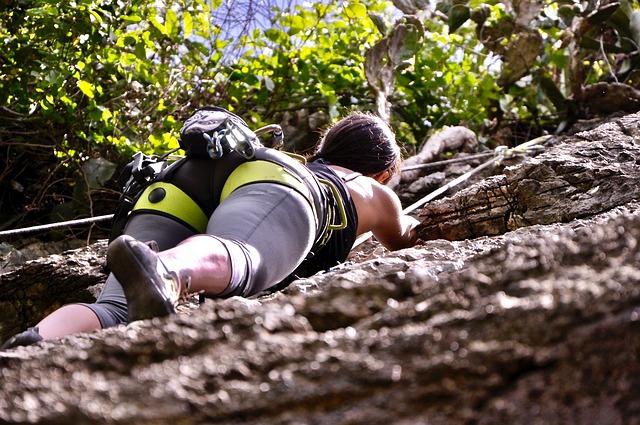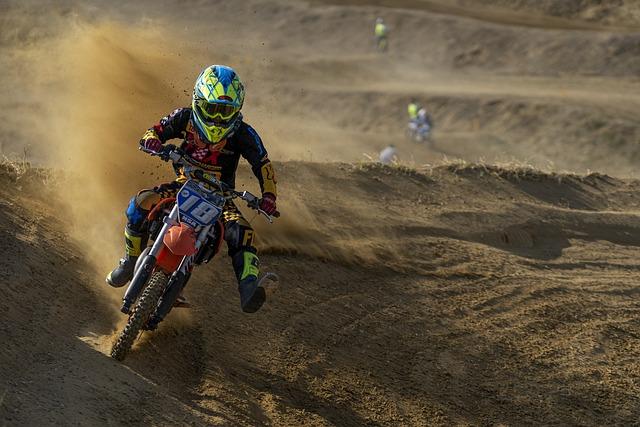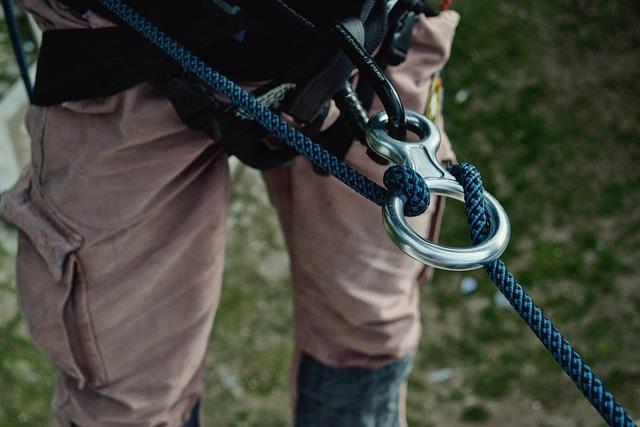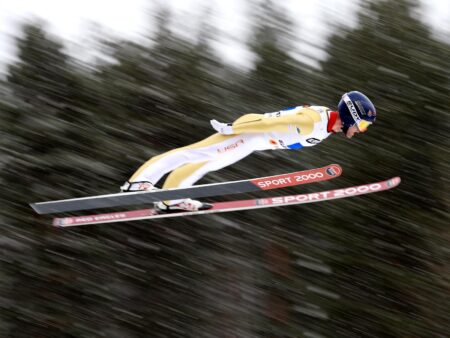Sport Climbing: Athletes Forced Out of Comfort Zone in New Combined Event
In an exhilarating evolution of athletics,sport climbing is witnessing a seismic shift as athletes prepare to tackle a new combined event format that challenges their skills and adaptability like never before.As the sport continues to grow in popularity following its Olympic debut in Tokyo 2020, climbers are venturing beyond their traditional strengths to compete in disciplines that blend speed, bouldering, and lead climbing. This unprecedented combination not only tests their physical prowess but also places them under psychological pressure,demanding a level of versatility that could redefine what it means to be a successful climber. This article delves into the implications of the new competition structure, examining how it is reshaping training regimens, strategies, and the very fabric of sport climbing itself. From elite athletes to grassroots competitors, the forced departure from comfort zones is setting the stage for a thrilling evolution in this dynamic sport.
Evolving Challenges of the Combined Format in Sport Climbing

The introduction of the combined format in sport climbing has ushered in a host of new challenges for athletes,compelling them to adapt quickly to a multifaceted competition structure. This hybrid event amalgamates three distinct disciplines: bouldering, lead climbing, and speed climbing. Consequently, athletes are no longer able to hone their skills in isolation; they must excel across varied climbing styles, each requiring a unique strategy and skill set.
Key challenges faced by athletes include:
- Time Management: Athletes must efficiently balance their training for three disciplines, often feeling stretched thin.
- Psychological Pressure: The pressure to perform consistently across different formats can lead to mental fatigue and performance anxiety.
- Varied Skill Sets: A climber excelling in bouldering may struggle in lead climbing or speed events, requiring significant adjustment and versatility.
Moreover, competitive strategy has evolved, demanding that athletes not only assess their own capabilities but also gauge the strengths and weaknesses of their competitors across all three disciplines. This deeper complexity in competition formats adds layers of unpredictability, ultimately reshaping how climbers prepare for events.
| Discipline | Primary Focus | Common Techniques |
|---|---|---|
| Bouldering | Power and Technique | Dynamic Moves, Mantling |
| Lead Climbing | Stamina and Strategy | Footwork, Route reading |
| Speed Climbing | Quickness and Precision | Efficient Movements, Agility |
Analyzing the Impact of Cross-Discipline Competitions on Athletes’ Performance

The introduction of cross-discipline competitions, particularly in sports like sport climbing, has pushed athletes to expand their skill sets and adapt to unconventional settings. This shift not only tests their physical abilities but also challenges their mental resilience. Athletes who once specialized in a single discipline now find themselves compelled to master multiple techniques, which can significantly alter their performance dynamics.
As climbers engage in combined events that incorporate different styles, they encounter unique challenges that can lead to both breakthroughs and setbacks. The necessity to switch gears between disciplines can enhance strategic thinking and problem-solving skills. As a notable example, athletes must quickly adapt their approach to navigate diverse formats such as speed climbing, bouldering, and lead climbing.This multifaceted training can lead to:
- Improved versatility: athletes develop broader competencies, making them well-rounded competitors.
- Enhanced focus: the need to switch disciplines fosters acute concentration and situational awareness.
- Heightened Performance Pressure: Simultaneously facing different styles can lead to increased stress, testing mental fortitude.
Moreover, the competition structure promotes a sense of camaraderie among participants, who frequently enough share training environments and knowledge across disciplines. This collaborative spirit can encourage innovations in techniques and strategies that athletes might not have explored within their isolated practices. However, it also raises the stakes, as the adaptation curve is steep and the margin for error becomes even narrower. Understanding how these pressures affect performance is crucial for teams and coaches aiming to maximize potential in a rapidly evolving competitive landscape.
| Performance Factor | Impact of Cross-Discipline Competitions |
|---|---|
| Skill Acquisition | Faster progress of diverse climbing techniques |
| Mental Toughness | Greater resilience due to varied competitive environments |
| Community Building | increased collaboration and sharing of insights among athletes |
Mental Fortitude: the Psychological Demands of Adapting to New Formats

As athletes transition into new formats within sport climbing, the psychological challenges intensify.competing in a combined format demands not only physical prowess but also a robust mental framework, which can significantly impact performance. The shift requires climbers to enhance their adaptability, forcing them to recalibrate their strategies and expectations.
Several key factors emerge that highlight the psychological demands placed on these athletes:
- Pressure Management: Athletes must cope with the heightened stakes of a combined event, where every mistake could mean the difference between victory and defeat.
- Focus and Concentration: The need for sustained mental clarity becomes paramount as athletes navigate diverse climbing disciplines, requiring them to shift their focus quickly from bouldering to sport climbing.
- Visualization Techniques: many climbers are now incorporating advanced visualization techniques to mentally rehearse each climbing segment, which may enhance their confidence and improve execution.
| athlete | Adaptability Techniques | Mental Challenges |
|---|---|---|
| Jane Doe | Mindfulness Meditation | Overcoming Performance Anxiety |
| John Smith | Structured Training Plans | Maintaining Focus under Pressure |
| Alice Brown | Visualization Strategies | Adapting to Sudden Changes |
As they navigate these multifaceted psychological hurdles,athletes demonstrate remarkable resilience. The challenge doesn’t just lie in adjusting technically but in cultivating the mindset required to thrive under pressure, turning discomfort into a competitive advantage.
Strategies for Athletes to Thrive in the New Combined sport Climbing Event
The new combined sport climbing event challenges athletes to adapt quickly and develop multifaceted skills. To excel in this dynamic environment, athletes can adopt several strategies that target both physical and mental performance.
- Diverse Training Regimens: Athletes must integrate bouldering, lead climbing, and speed climbing into their training programs. By emphasizing each discipline, climbers can build specific strengths while enhancing their overall climbing ability. Cross-training with related sports, such as gymnastics or even parkour, can also improve agility and explosive strength.
- Focus on mental Resilience: Competing in a multi-discipline event can increase stress levels. Incorporating mental conditioning techniques, such as visualization and mindfulness, can definitely help athletes stay focused and calm under pressure. Regularly practicing these techniques can lead to better decision-making during competitions.
- Nutrition and Recovery: With the physical demands of competing in various formats, a robust nutrition and recovery plan is essential. Athletes should prioritize a balanced diet rich in carbohydrates, proteins, and healthy fats. moreover, ensuring sufficient rest and engaging in recovery practices, such as stretching and physiotherapy, is crucial to maintain peak performance.
A practical approach to monitor these strategies can involve using a performance tracking table that focuses on weekly goals across disciplines. Athletes can list their achievements and areas for enhancement,enabling a visual portrayal of their progress over time.
| Week | Bouldering Goals | Lead Climbing Goals | speed Climbing Goals |
|---|---|---|---|
| 1 | Complete V5 problems | Climb to 6c | Achieve sub-12 seconds |
| 2 | Focus on dynamic moves | Experience different routes | Improve reaction time |
| 3 | Try complex overhangs | Increase endurance with long climbs | Conduct time trials |
By combining these strategies and tracking progress holistically, athletes can ensure they are well-prepared to meet the demands of this challenging yet exhilarating new format in sport climbing.
Key Takeaways
the introduction of the combined event in sport climbing marks a significant evolution in this dynamic discipline, pushing athletes to adapt and excel in multiple facets of their sport. As climbers navigate the unique challenges posed by bouldering, lead climbing, and speed climbing, they are not only redefining their competitive strategies but also broadening the appeal of climbing to a wider audience. With the spotlight now firmly on these athletes as they embrace the pressures of a multifaceted competition, the sport is poised for transformation.As fans and newcomers alike engage with this thrilling blend of skills, the future of sport climbing looks both promising and exciting. As we watch these athletes step out of their comfort zones, one thing remains clear: the climb to greatness has never been more exhilarating.






